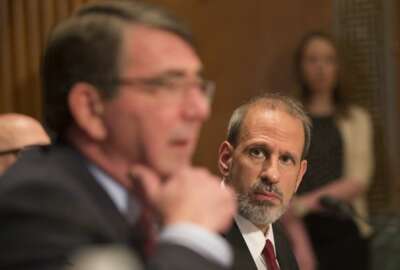
Despite billions invested in DoD ERP systems, few financial managers see reduction in workload
The Defense Department has spent well over a decade and tens of billions of dollars to buy enterprise resource planning (ERP) systems with the hope that they would...
The Defense Department has spent well over a decade and tens of billions of dollars to buy enterprise resource planning (ERP) systems with the hope that they would help the military adopt modern, automated business processes and pave the way to financial auditability. But a strikingly small number of DoD financial managers think the systems have done anything to make their jobs easier.
The finding is part of an annual survey and report by the American Society of Military Comptrollers and Grant Thornton. Only 20 percent of the Defense financial workforce said the ERPs had reduced their workload. Another 20 percent said they had made no difference, and 15 percent said they’d actually made their lives more complicated than working with the decades-old legacy systems the ERPS are replacing.
Interviews and roundtable discussions with participants revealed that there’s actually a fairly straightforward explanation for that, said Ariane Whittemore, who leads defense and security matters at Grant Thornton and served as the survey’s director.
“It’s because a lot of the workload associated with the legacy systems is still there — those systems weren’t retired soon enough. In many cases, the military services and agencies are still a little skeptical about shutting those systems down until they’re sure the ERPs are providing what they need,” Whittemore said in an interview for Federal News Radio’s On DoD. “The concern is not with the ERP systems — they felt those systems are very capable. It’s the fact that they’re having to maintain two duplicative systems and populate data into both.”
As one in a series of recommendations to the incoming administration, the report recommends an end-to-end review of all of the financial systems DoD is using with the goal of bringing the new ones online as quickly as possible and a “ruthless” decommissioning of legacy systems.
This year’s report represents the ninth year in a row in which researchers have surveyed hundreds of rank-and-file and senior executive members of the Pentagon’s financial management community. Aside from IT modernization, it found at least three other common themes that repeated themselves year-after-year.
Among the most obvious: comptrollers have become fed up with budget uncertainty after having to navigate through eight consecutive years of continuing resolutions, government shutdowns and limitations imposed by the Budget Control Act. As one anonymous respondent put it: “We’re great at building a budget and manpower models based on forecast costs and requirements,” but budgets have had to be “modified continually in response to lower than expected levels of actual receipt of funds.”
But through the years, including in the 2016 survey, managers also said they were concerned about their ability to attract and retain qualified people. Only 20 percent said their workforce was more qualified than in the year before, despite the implementation of DoD’s first-ever training and certification program for financial managers.
“[Former DoD comptroller] Bob Hale was very successful in building a very high-quality program, and our survey found that people feel like it’s providing some value, but it’s only in its third year of implementation,” Whittemore said. “The common thought about how to improve it is that DoD needs more leadership training, because most of it is focused on hardcore disciplines like accounting, budgeting, cost management. Secondly, the courses need to be better aligned with people’s job-specific requirements, not just the level of the job.”
Getting a successful audit of the Defense Department’s financial statements also emerged as a clear theme, but the surveys also show that financial managers’ attitudes on the matter have changed over time.
In the early years of the Obama administration, comptrollers tended to feel that audit readiness was a distraction from their core job: the annual exercise of building a military budget, and a majority of financial management executives thought DoD would take more than a decade to complete its first audit if it ever did so at all.
“How important is an unqualified opinion to the warfighter? Do we understand the costs and benefits of an unqualified opinion?” one skeptical senior executive said during the 2009 edition of the survey.
By contrast, this year’s report found survey participants “almost universally supported the notion that audit preparations and audits have had a positive effect on DoD,” including by improving military department and Defense agency’s internal controls and helping their own organizations to run more efficiently.
The department is under a statutory mandate to declare audit readiness on its consolidated financial statement by the end of fiscal 2017. Whittemore said most DoD financial managers concerns, these days, are about sustaining auditable practices over the long haul.
“From what we’ve seen through our roundtable discussions, all of the department is now committed to achieving auditability,” she said. “Now it’s about having good, repeatable processes and sustainable business practices that will enable the department to sustain this for the long term. It’s very time-consuming right now, but as you improve your processes, your ability to respond to auditors’ requests for information gets a lot more efficient. You know what they’re looking for, you have a process at your fingertips that lets you respond more quickly. It’s a herculean effort in the early years, but the more you go under audit, the easier it becomes because you’re keeping the right documentation in the right places.”
Copyright © 2025 Federal News Network. All rights reserved. This website is not intended for users located within the European Economic Area.
Jared Serbu is deputy editor of Federal News Network and reports on the Defense Department’s contracting, legislative, workforce and IT issues.
Follow @jserbuWFED
Related Stories




